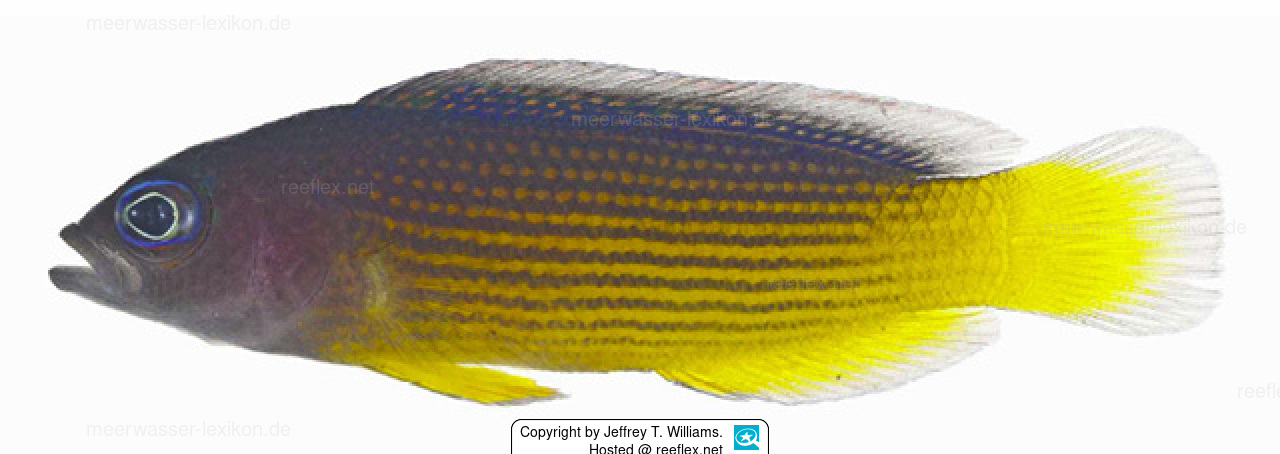Info
Sparkfin Dottyback
Species of Manonichthys facultatively enter large sponges. However, no large sponges were observed at the collection sites. Found in outer reefs and lagoons in 2-33 m
This wonderful fish is seldomly seen in the shops and therfore quite expensive. May get agressive against others of his species and smaller fish.
Main reference:
Gill, A.C. and J.T. Williams, 2011. Description of two new species of Pseudochrominae from northern Palawan and Mindoro, Philippine Islands (Teleostei: Perciformes: Pseudochromidae). Zootaxa 3140:49-59. (Ref. 88961)







 Dr. Jeffrey T. Williams, USA
Dr. Jeffrey T. Williams, USA






